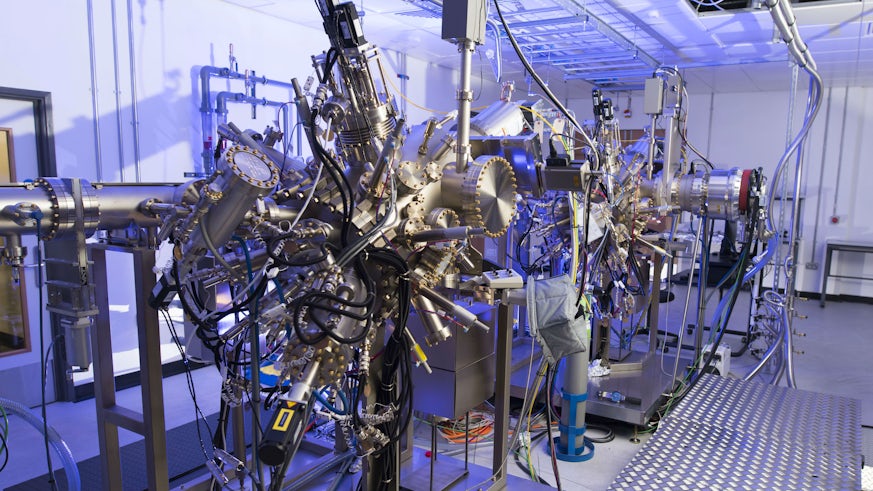Cardiff in world-beating CS breakthrough
8 July 2019

Cardiff University researchers have developed world-leading Compound Semiconductor (CS) technology that can drive future high-speed data communications.
A team from the Institute for Compound Semiconductors (ICS) worked with collaborators to innovate an ultrafast and highly sensitive ‘avalanche photodiode’ (APD) that creates less electronic ‘noise’ than its silicon rivals.
APDs are highly sensitive semiconductor devices that exploit the ‘photoelectric effect’ – when light hits a material - to convert light to electricity.
Faster, supersensitive APDs are in demand worldwide for use in high-speed data communications and light detection and ranging (LIDAR) systems for autonomous vehicles.
A paper outlining the breakthrough in creating extremely low excess noise and high sensitivity APDs is published today in Nature Photonics.
Cardiff researchers led by Sêr Cymru Professor Diana Huffaker, Scientific Director of ICS and Sêr Cymru Chair in Advanced Engineering and Materials, partnered with the University of Sheffield and the California NanoSystems Institute, University of California, Los Angeles (UCLA) to develop the technology.
Professor Huffaker said: “Our work to develop extremely low excess noise and high sensitivity avalanche photodiodes has the potential to yield a new class of high-performance receivers for applications in networking and sensing.
“The innovation lies in the advanced materials development using molecular beam epitaxy (MBE) to “grow” the compound semiconductor crystal in an atom-by-atom regime. This particular material is rather complex and challenging to synthesize as it combines four different atoms requiring a new MBE methodology. The Sêr Cymru MBE facility, part funded by HEFCW, is designed specifically to realize an entire family of challenging materials targeting future sensing solutions.”
Dr. Shiyu Xie, Sêr Cymru Cofund Fellow said: “The results we are reporting are significant as they operate in very low-signal environment, at room temperature, and very importantly are compatible with the current InP optoelectronic platform used by most commercial communication vendors.
“These APDs have a wide range of applications. In LIDAR, or 3D laser mapping, they are used to produce high-resolution maps, with applications in geomorphology, seismology and in the control and navigation of some autonomous cars.
“Our findings can change the global field of research in APDs. The material we have developed can be a direct substitute in the current existing APDs, yielding a higher data transmission rate or enabling a much longer transmission distance.”
The Sêr Cymru Group within ICS is now preparing a proposal with collaborators at Sheffield for funding from UK Research and Innovation to support further work.
Cardiff University Vice-Chancellor, Professor Colin Riordan, added: “The work of Professor Huffaker’s Sêr Cymru Group plays a vital role in supporting the ongoing success of the wider Compound Semiconductor cluster, CS Connected, which brings together ten industry and academic partners in South Wales to develop 21st Century technologies that create economic prosperity.”
Professor Huffaker added: “Our research produces direct benefits for industry. We are working closely with Airbus and the Compound Semiconductor Applications Catapult to apply this technology to future free space optics communication system.”
Share this story
It is a friendly, approachable School with a strong commitment to teaching excellence and world class research in physics and astronomy.


